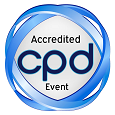Biography
Biography: Roman Hájek
Abstract
Over the last decade, overall trends in multiple myeloma (MM), particularly in younger patients, show approximately doubling. Old “dogma” myeloma is incurable is not more true. A significant part of increasing survival rates can be attributed to new treatments for MM. The use of novel agents (proteasome inhibitors, immunomodulatory agents, recently approved monoclonal antibodies) has led to more options for patients suffering from such a heterogeneous disease as MM. Not only we have more options, but our understanding of who we should give these treatments to and when, as well as improving how we administer these drugs to make it as easy as possible for patients and clinicians is growing. The role of pharmaceutical companies in drug development is unquestionable. Huge research effort and cost is behind this impressive progress in MM treatment options starting with introduction of novel agents in preclinical phase and phase-I clinical trials and concluding with registration clinical trials phase-III. However, the role of academic research groups is crucial if complex treatment strategy is required to achieve the best outcome such as increase cure rate in multiple myeloma. There are several key hot targets for clinical trials, such as monitoring of minimal residual disease (MRD), achievement of MRD negativity and treatment of MRD. Expanding cure is probably the most challenging target for well-designed trials “Style of Total Therapy”. The presentation will review incredible progress as well as paradoxes in the treatment of multiple myeloma and key challenges and/or open questions in the world.

